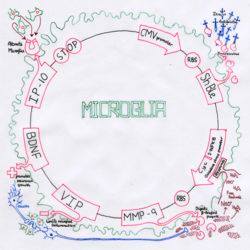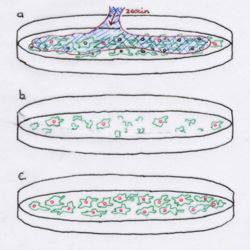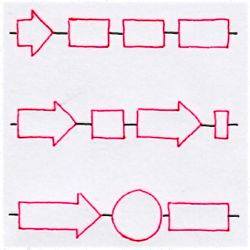Team:UCL/Project
From 2013.igem.org
| (3 intermediate revisions not shown) | |||
| Line 173: | Line 173: | ||
<p class="abstract_text"> | <p class="abstract_text"> | ||
We used resistance to zeocin, a cell killing glycoprotein, to act as a selectable marker for transformation/transfection in our chassis; E.coli, HeLa and microglia. | We used resistance to zeocin, a cell killing glycoprotein, to act as a selectable marker for transformation/transfection in our chassis; E.coli, HeLa and microglia. | ||
| + | |||
| + | The biobrick that we made encoding zeocin resistance is a step forward for selectable markers in iGEM - the first one of its kind tailored for mammalian expression systems. | ||
</p> | </p> | ||
| Line 196: | Line 198: | ||
<p class="abstract_title">Chassis</p> | <p class="abstract_title">Chassis</p> | ||
<p class="abstract_text"> | <p class="abstract_text"> | ||
| - | We conducted our experiments in three chassis, creating recombinant plasmids in E.coli before expressing them in HeLa and finally primary and immortalised human microglia lines. | + | We conducted our experiments in three chassis, creating recombinant plasmids in E.coli before expressing them in HeLa and finally primary and immortalised human microglia lines. Human brain cells have not been seen before in an iGEM project, with experiments in microglia coming as son as they arrive! |
</p> | </p> | ||
</a> | </a> | ||
| Line 219: | Line 221: | ||
<p class="abstract_title">Parts</p> | <p class="abstract_title">Parts</p> | ||
<p class="abstract_text"> | <p class="abstract_text"> | ||
| - | We submitted | + | We submitted two parts to the registry; a new eukaryotic and prokaryotic selectable marker, and the protease, MMP-9. |
| Line 267: | Line 269: | ||
<p class="abstract_title">Experiments</p> | <p class="abstract_title">Experiments</p> | ||
<p class="abstract_text"> | <p class="abstract_text"> | ||
| - | + | Here we explain the wet-lab experiments that built our project. All of these experiments built the foundation of our project, allowing us to generate, test and subsequently submit biobricks to the registry. | |
| - | + | ||
| + | This section includes experiments for both bacterial and mammalian lab that have been performed before the Lyon jamboree! | ||
| + | </p> | ||
</a> | </a> | ||
</div> | </div> | ||
| Line 281: | Line 285: | ||
<div class="col_illustration"> | <div class="col_illustration"> | ||
| - | <a href="https://static.igem.org/mediawiki/2013/ | + | <a href="https://static.igem.org/mediawiki/2013/4/4c/Labook_pic.jpg" data-lightbox="image-1" title="Protocols UCL iGEM 2013"> |
| - | <img src="https://static.igem.org/mediawiki/2013/ | + | <img src="https://static.igem.org/mediawiki/2013/4/4c/Labook_pic.jpg"> |
</a> | </a> | ||
</div> | </div> | ||
| Line 290: | Line 294: | ||
<p class="abstract_title">Lab Protocols</p> | <p class="abstract_title">Lab Protocols</p> | ||
<p class="abstract_text"> | <p class="abstract_text"> | ||
| - | + | You cannot plan an experiment without the procedure. Here we have stored all of the protocols that were used in order to make out wet lab work possible. | |
| + | |||
| + | This section includes protocols for both bacterial and mammalian lab experiments that have been performed before the Lyon jamboree! | ||
</p> | </p> | ||
</a> | </a> | ||
Latest revision as of 03:22, 5 October 2013
IGEM: INTELLIGENTLY GENETICALLY ENGINEERED MICROGLIA
Synthetic Biology Fights Alzheimer's Disease
This year, the UCL iGEM team is taking a radical new step with synthetic biology. We intend to explore the potential application genetic engineering techniques on the brain, because it is the site of some of the most subtle, and many of the most devastating medical conditions. Alzheimer’s Disease is a neurodegenerative disease characterised by the loss of recent memory and intellectual functions. We have devised a genetic circuit for transfection into microglia, a novel chassis in which standard assembly has never been used, to boost their ability to break down senile plaques, which are associated with Alzheimer’s disease, as well as to support and protect endangered neurons from microglia-mediated neuroinflammation.
Click the abstracts below to read more.
 "
"










